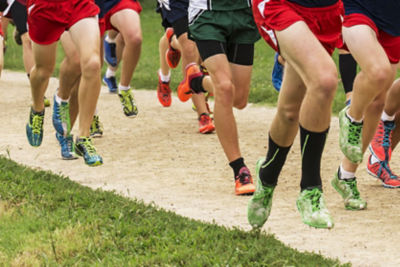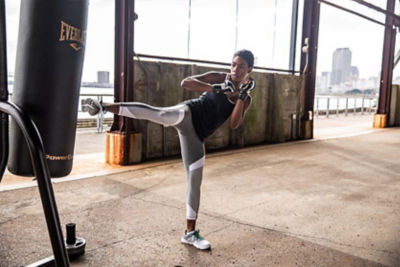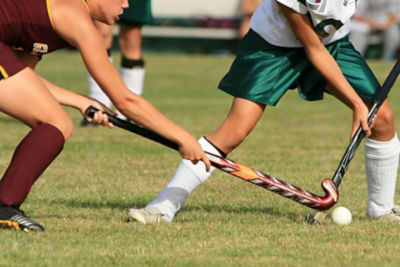What to Expect In Your Child's First Gymnastics Classes
Gymnastics is a fun, dynamic sport that lets kids feed their inner circus performer, daredevil or Olympian dream. Pro Tips highlights 6 key things to know when beginning gymnastics.

How do they do that? Watching gymnasts hurl their bodies through the air while twisting and spinning, all the while under complete control, is an awe-inspiring thing. Being able to do it is another. While spunky students may, indeed, try to launch themselves in the air during that first class, the goal of the coach or instructor is to teach kids the fundamentals and have fun, so they will fall in love with the sport and therefore further develop their skills. Don’t expect any Yurchenkos or full-in back-outs on day one.
Use this guide to prepare your child, find out what to expect and pick up a few tips on making this a rewarding experience for all of you. Let’s get tumbling!
THE SIGHTS AND SOUNDS… AND SMELLS
When you first walk into a gymnastics facility, it can be overwhelming and exciting. Something you may notice right away is a lot more equipment than when you watch a gymnastics competition on TV. Do not be surprised to see mats shaped like oversized building blocks — wedges, cylinders, bridges, rectangles — or even a “pit” filled with foam blocks.
The overall murmur of a gym filled with multiple classes taking place, punctuated by athletes punching off of beatboards, may feel like chaos. However, there is order to the rotations of gymnasts moving from event to event, activity to activity. If your child is easily overwhelmed, it may be helpful to have them watch a class or two before signing up to ensure they are excited about the opportunity and are able to deal with the environment.
Another thing you may notice is the somewhat “locker room” smell. Gymnasts at all levels work hard, and a facility where athletes train will often remind you of this the moment you enter. Kids usually are not fazed, and for former gymnasts, that smell is the smell of “home.” So, whether you personally thrive on that aroma or not, just don’t be taken aback.
If the classes you have decided to enroll in take place at a community center or school gym, you may encounter a slightly different set up. For example, folding mats might replace a full floor exercise. Equipment may need to be set up and broke down for each class or might be a bit sparser due to sharing the space with other activities. Generally, fewer classes take place simultaneously at any given time, and your class may be the only one happening in that window. This does not mean the instruction you receive will be better or worse than that of a dedicated gymnastics facility. The coach’s style and philosophy, how many students are enrolled and what works best for your own child’s temperament are what should drive your choice when you are just starting out.
GET DOWN TO THE BASICS
Much of an introductory-level class session will focus on developing strength and flexibility, as well as good listening skills. It will also help youngsters become comfortable with the gym equipment — and the often discombobulating sensation of being upside down!
The types of skills taught can vary based on the age of the children in the class. For example, older students are able to understand complex instruction better than 2-4 year-olds. An experienced coach will tailor the instruction to the age group.
Generally, the class will start with a warm-up that often includes stretches and other exercises. Gymnastics for both men and women requires flexibility, and this is something that even elite competitors work on constantly. Many programs will make warm-ups a set routine so that eventually students can take turns leading the warm-up. After, the class typically moves on to instruction and practice.
You can expect skills such as rolls, handstands, bridges, cartwheels, as well as leaps and jumps, to be covered. If your child desperately wants to learn how to “flip,” let them know that the skills they are learning now are the foundation to build up to that skill. Before you can land a back tuck, you need to learn a backwards tuck roll. Before you go for an aerial, you must master the cartwheel. Each skill is a building block towards a more advanced skill. They should not try advanced skills on their own until their coach lets them know they are ready.
COME PREPARED
This sounds a bit like stating the obvious, however coaches will tell you it is worth repeating: it starts with arriving on time. Being late may mean the athlete will not have had the time to warm up properly, not to mention the disruption to the other students when someone joins in late.
Bring your child to class clean, dressed and ready to participate. Wear fitted clothes. Kids will be going upside down. You do not want them trying to hold their shirt down when they should be focused on their form and the safe execution of the skill at hand. For girls, a leotard and compression shorts are recommended. Avoid tights as the footing can be slippery. Leggings and footless tights are generally fine. For boys, a compression shirt or t-shirt which can tuck in and athletic shorts or compression shorts should work. Gymnasts may wear socks; if they find them slippery, they can be easily removed. At the beginner stage, special accessories such as grips or beam shoes are not necessary unless specifically directed by your coach.
No jewelry should be worn.
If ears are newly pierced and earrings cannot be taken out, they must be low-profile studs. Rings, necklaces, bracelets (excluding medical) and dangling earrings should be left at home.
Long hair should be tied back.
Since kids will be rolling, they may find a bun to be an obstacle on their head. Some kids prefer a braid so that on twisting moves their hair does not whip them in the face. Your child will quickly find what styles work best for them, but most kids will be fine with a simple pony tail or pig tails. The key is to keep it out of the face so it is not a distraction or something they need to swipe aside when they finish a skill. Elastic headbands can be another help here, so long as they have enough grip to not fly off when practicing.
Eat well before class.
As stated before, kids will be going upside down. Upset tummies lead to a mess for the instructor, so ensure your child has had proper time to digest their meal before class starts.
Bring a water bottle.
Even if the class is only 30-45 minutes, it sets a good habit for your child on the importance of hydration as an athlete.
Finally, have them use the bathroom before class. Especially with the youngest students, when one kid has to go during class, suddenly they all need to go!
SPOTTING
Gymnastics is a sport that requires a great deal of hands-on help from the coach. And this is a literal hands-on. Spotting can range from nudging the gymnast to completely carrying the gymnast through the motion. Most of the time, in order to best support a child and be there in case they bobble or fall, the coach will guide the athlete at their midsection — sides, stomach, back and shoulders. The arms and legs are also spotted to help move a gymnast through a new skill. This not only helps the athlete feel the proper form and technique, it also helps provide a safer experience as new skills are being developed.
PARENTS
Many gymnastics facilities will have an area set aside for parents to hang out while class is in session. It is important to stay within these designated areas.
For some little ones, an audience is a big distraction. If they are constantly looking over to see if mom or dad are watching, instead of focusing on what the instructor is saying or what skills they are doing, you may want to consider using class time to run an errand or two.
At any age, avoid gesturing to the child to pay attention, or stepping in when the child is nervous about a skill. Well-meaning parents can quickly become a distraction for the coach, as well as the kids. If the coach does need your assistance, they will reach out and ask.
Generally, programs without viewing areas will offer specific days in the session to observe, typically the first, middle and final class. This way, parents can see progress and gymnasts can show-off what they have learned.
The rules and philosophies vary by gym, so ask questions if you are unsure of proper protocols.
FUN!
Gymnastics should be fun from the beginning, filled with new friends and new experiences. And while there may be challenging moments as the gymnast progresses and the skills become more difficult, it’s hard to top that feeling when you learn — then master — something new!
Fair warning: the fun usually does not end at the gym. Many a parent has been dismayed to find the arm of a couch being used as a vault, the bed a perfect crashpad and walls filled with feet marks from “spotting” handstands. The whirling dervish of arms and legs going every which way is just a tell-tale sign that your son or daughter has fallen for gymnastics!








